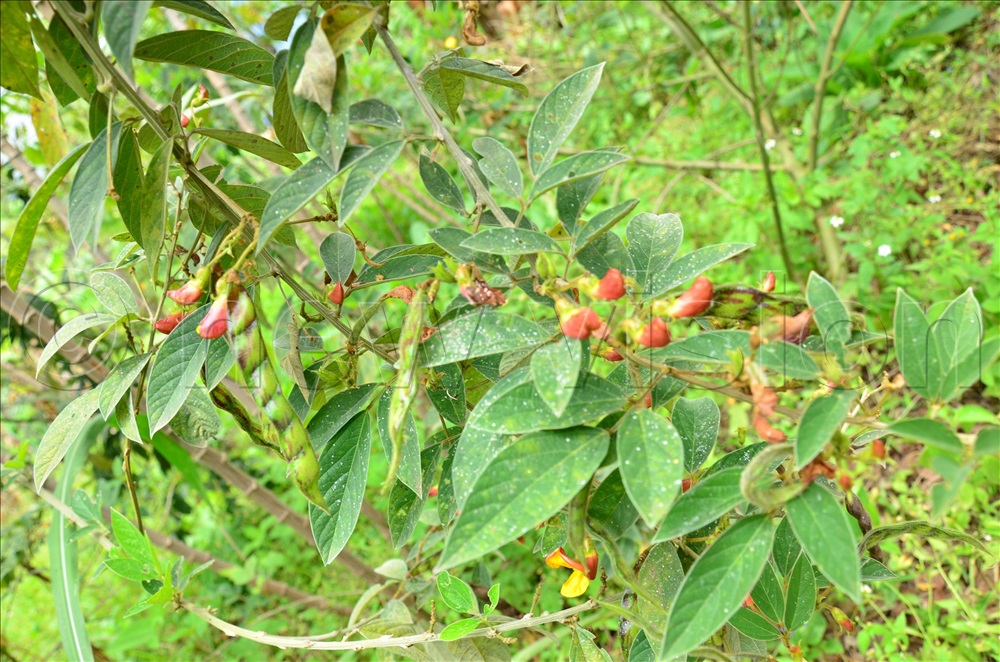By Umar Nsubuga
Planting pigeon peas can be highly beneficial for both small-scale and commercial farmers due to their adaptability, soil-enriching properties, and nutritional value.
Evanice Manyiraho, an experienced herbal farmer and a resident of Kicwamba in Kabarole district says site selection and soil preparation is a key for pigeon peas growing.
She says pigeon peas prefer areas with moderate rainfall and well-drained soils, though they can also thrive in semi-arid conditions.
She says when you clear the land, just remove weeds and debris before planting. Plow the land to a fine tilth if needed.
“Use certified, disease-free seeds for optimal germination rates. Soak the seeds in water for 8-12 hours to enhance germination or use fungicide seed treatment to prevent early diseases,” she advises.

According to Manyiraho, pigeon peas are best planted directly into the field, sow seeds in rows, 60-75 cm apart, with 30-50 cm between plants in a row. Plant seeds about 2-5 cm deep.
Intercropping
Gideon Zakke, an agronomist says pigeon peas are often intercropped with maize, sorghum, or millet to maximise land use. In regions with distinct rainy seasons, plant at the beginning of the rains.
Manyiraho also says pigeon peas are drought-tolerant, but young plants need adequate moisture to establish. If rainfall is insufficient, water the plants moderately, especially in the early stages.
In dry areas, drip irrigation can be useful.
Fertilisation and soil management
“Apply phosphorus-rich fertiliser at planting to aid in root development. Avoid excessive nitrogen as pigeon peas fix nitrogen in the soil. Use organic compost or manure to improve soil fertility and structure,” says Manyiraho.
Weeding and pest control
Remove weeds regularly, especially during the early stages of growth.
Manyiraho says common pests include pod borers and aphids. Use biological control agents or appropriate insecticides if necessary. Diseases like Fusarium wilt can be managed through crop rotation.
Harvesting
Pigeon peas mature between 5-7 months, depending on the variety. Harvest when the pods turn brown and are dry.
Harvest when the pods are green, and the seeds are tender, she says to wait until the pods dry completely and then thresh to collect the seeds.
Values and benefits of pigeon peas
Nutritional benefits
Manyiraho says Pigeon peas contain about 20-25% protein, making them an excellent source of plant-based nutrition.
They are a good source of dietary fiber, vitamins (such as Vitamin B), and minerals like potassium, magnesium, and calcium. Pigeon peas are low in fat, making them suitable for heart-healthy diets.
Soil fertility and agroecological value
According to Manyiraho, pigeon peas are leguminous and fix nitrogen into the soil, improving soil fertility for subsequent crops.
He adds that their deep root system allows them to thrive in semi-arid areas, helping to restore soil health in marginal lands. Pigeon peas reduce soil erosion due to their ability to hold the soil in place with their extensive root system.
Economic and livelihood benefits
Zaake says pigeon peas can be sold as fresh or dry pulses in markets, offering a steady income stream. Pigeon peas can be processed into flour, used in food processing, or sold for export, boosting household income.
Environmental benefits
Manyiraho also says that pigeon peas attract beneficial insects and helps maintain ecological balance in mixed farming systems.
Health benefits
The high fiber content in pigeon peas supports healthy cholesterol levels and improves cardiovascular health.
Their fiber helps in regulating the digestive system, preventing constipation and promoting gut health.
Pigeon peas contain polyphenols that have antioxidant properties, which help fight free radicals and reduce the risk of chronic diseases.





